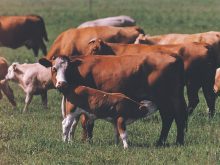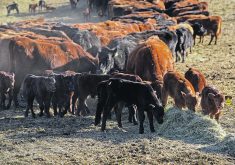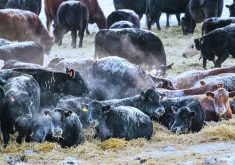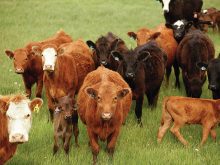Alsike clover, in either hay or pasture form, is poisonous to horses. It can trigger a severe skin reaction to sunlight or it can kill horses within 24 hours of exposure.
The alsike clover plant contains a toxin, thought to be an alkaloid, which damages liver cells. It is also called big liver disease because the liver swells in size.
Prolonged exposure to the alsike clover toxin ultimately results in liver cirrhosis, the same severe liver scarring that occurs in people who drink large amounts of alcohol.
Read Also

Agriculture needs to prepare for government spending cuts
As government makes necessary cuts to spending, what can be reduced or restructured in the budgets for agriculture?
Horses with alsike clover poisoning may show signs of liver disease; they become nervous, go off feed and show signs of colic. They may also pass brown urine and clay-coloured manure.
A horse that eats a large amount of toxin at one time can die from acute liver failure.
In some cases, horses develop low-grade liver disease and producers don’t know it is there until the animals develop characteristic skin lesions.
The reaction begins with chlorophyll, a component of all plants.
Once a plant is eaten, bacteria in the horse’s intestine change chlorophyll to phylloerythrin.
In a healthy horse, the liver removes phylloerythrin from the blood stream and excretes it in the bile.
If a horse’s liver is unhealthy, as in the case of alsike clover poisoning, phylloerythrin fails to clear from the blood stream. It circulates through the body and accumulates in skin cells.
When light of a certain wavelength shines on these cells, it reacts with the phylloerythrin, producing toxins that damage the cells. If enough cells die, the skin becomes inflamed and fluid accumulates in the skin tissue.
Ultimately, clear fluid oozes from the surface. The skin usually becomes infected.
Skin damage induced by light is better known as photosensitization. It is seen only in unprotected skin, usually the eyelids, muzzle, tongue, ears and mouth. Skin is safe if it is covered by hair and blankets or is pigmented, such as black skin.
If a horse is seen with symptoms suggestive of alsike clover toxicity, it should immediately be offered new feed that contains no trace of clover. It can also be given relief by keeping it in a dark or shaded area.
Though there is no specific treatment for liver damage induced by alsike clover, secondary skin infections can be controlled with antibiotics.
Alsike clover is a problem in horse pastures because it becomes a major portion of the forage by outcompeting grass. As a general guideline, alsike clover should make up less than five percent of horse feed.
The proportion of alsike clover in pastures can be reduced by spraying with herbicides such as Banvel or Lontrel.
Herbicide applications should be made when the clover is actively growing, or in the fall while the clover is still green.
High rates of nitrogen fertilizer suppress clover growth and promote grass growth. Horse owners should train themselves to recognize different clover species so they can prevent this serious poisoning. Alsike clover has large pink and white flowers, compared to ladino clover that has white flowers.
The alsike flower stem originates at the same place on the stalk as the leaflet stems.
Other clovers have flowers originating from the ground runner or flowers next to the leaves at the top of the plant.
















